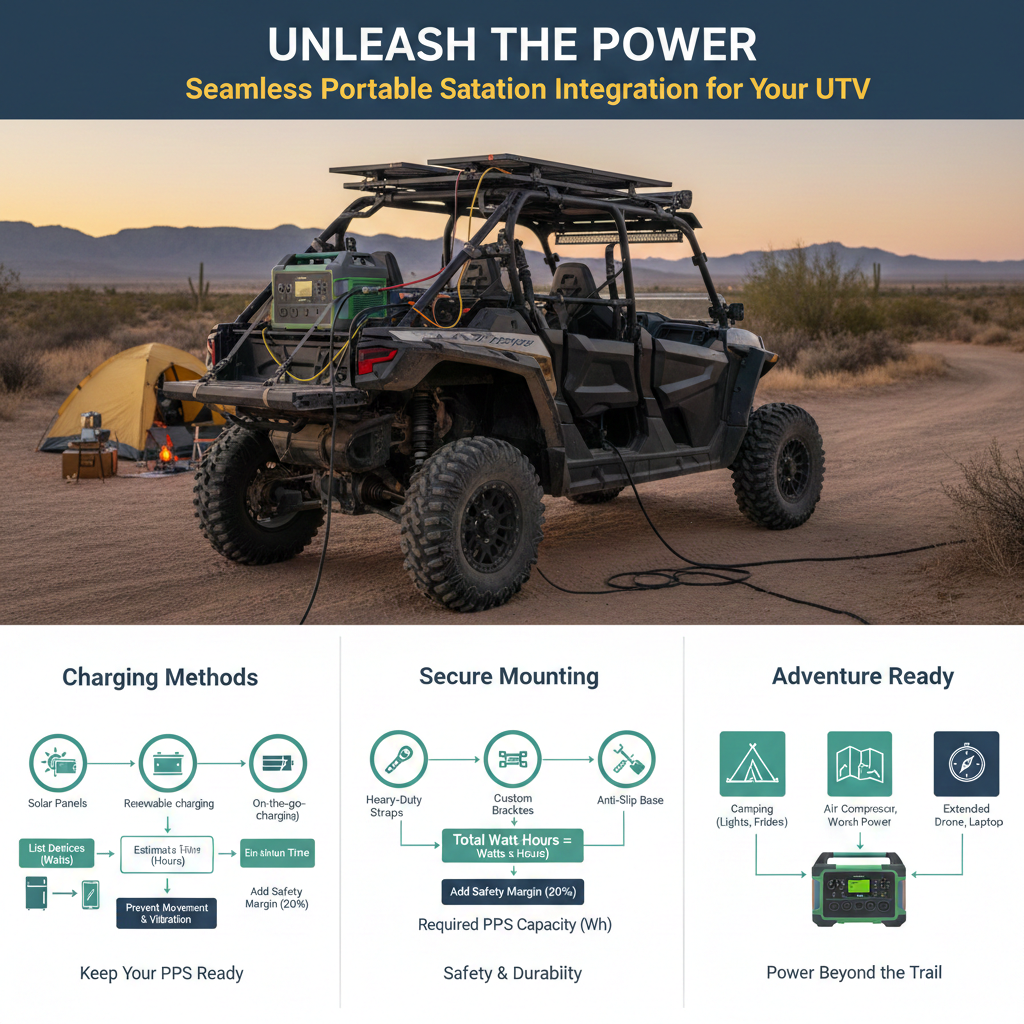Hey there, fellow audiophiles and car enthusiasts!
Have you ever invested in a fantastic car audio system, only to find that the roaring engine, buzzing road noise, and rattling panels diminish its true potential?
It’s a common frustration, and one that many of us have faced.
You can have the most expensive speakers, a top-tier amplifier, and a state-of-the-art head unit, but if your vehicle’s interior isn’t properly prepared, you’re essentially listening to your music through a sieve of sound.
That’s where the magic of custom sound system insulation techniques comes into play.
It’s not just about making your car quieter; it’s about creating an acoustically optimized environment where every note, every beat, and every lyric can truly shine.
For too long, many of us have focused solely on the components of our sound systems, overlooking the crucial role our vehicle’s environment plays.
Think of it like this: you wouldn’t set up a high-end home theater in a reverberant, empty room, would you?
The same principle applies to your car.
Road noise, engine hum, tire roar, and panel vibrations are all forms of interference that compete with your music, muddying the soundstage and robbing your audio of its clarity and impact.
By strategically applying sound insulation, we can transform our vehicle’s cabin into a quiet, controlled listening space, allowing our sound systems to perform at their absolute best.
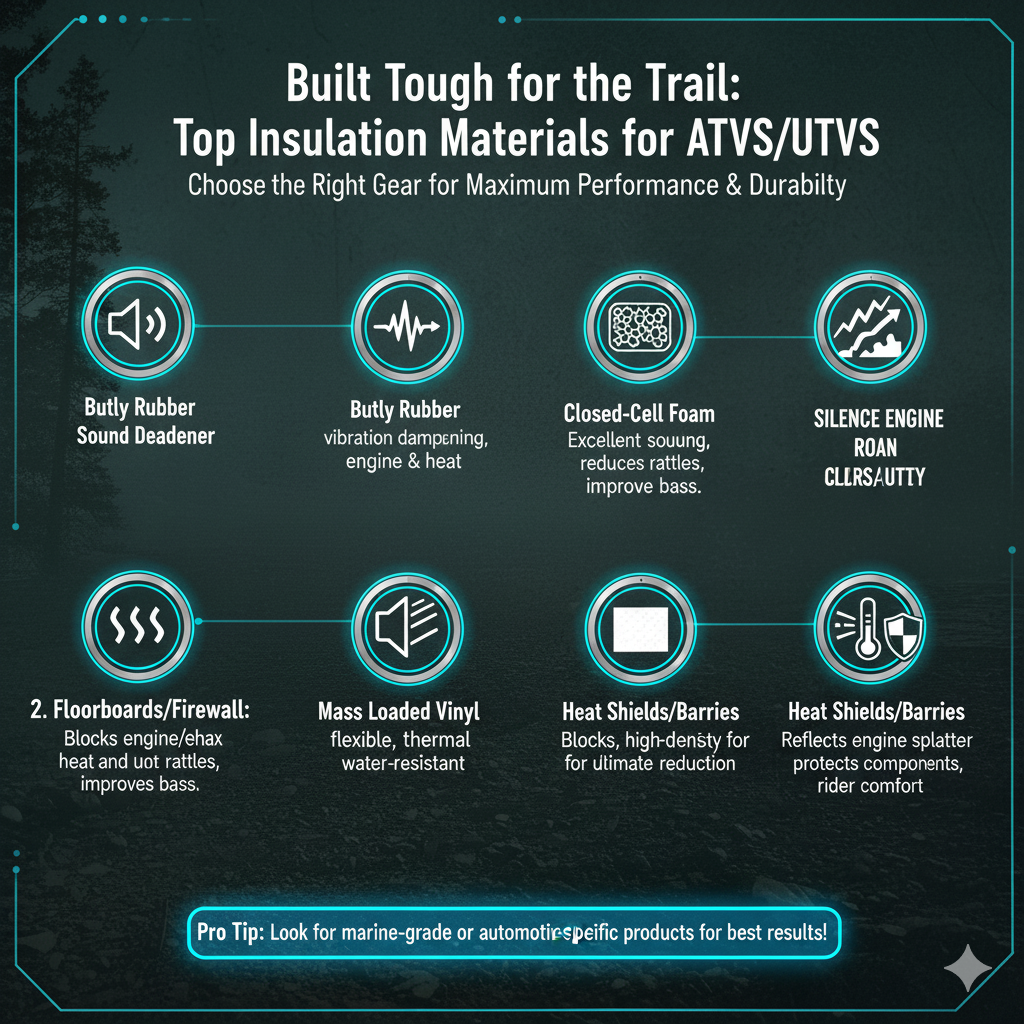
The Science of Silence: Understanding Sound and Vibration Control
Before we dive into the specific techniques, it’s helpful to understand the basic principles of how sound and vibration affect your car audio.
Sound travels through the air as waves, and it also transmits through solid objects as vibrations.
In a car, these two phenomena are constantly at play, creating a cacophony that interferes with your music.
1. Vibration Damping:
This is the first line of defense.
When your car is in motion, various parts – especially large, flat metal panels like doors, floorboards, and the trunk – vibrate.
These vibrations create their own noise and also distort the sound produced by your speakers.
Vibration damping materials, often called Constrained Layer Dampers (CLD), are designed to convert these mechanical vibrations into low-level heat.
They are typically heavy, flexible sheets with a butyl rubber core and an aluminum top layer.
Applying these to vibrating surfaces adds mass and stiffens the panel, significantly reducing resonance. [1, 2]
2. Sound Absorption:
Once vibrations are controlled, the next step is to tackle airborne noise and reflections within the cabin.
Sound absorbing materials are porous and designed to trap sound waves, preventing them from bouncing around and creating echoes or muddling the sound.
These are typically foams, fibers, or felt-like materials.
Open-cell foams are particularly effective at absorbing airborne noise, while closed-cell foams can also offer thermal insulation benefits. [3]
3. Noise Blocking (Decoupling):
This involves creating a barrier against external noise entering the cabin.
Heavy, dense materials are used to physically block sound waves.
Mass Loaded Vinyl (MLV) is a prime example – it’s a flexible, heavy barrier that is excellent at blocking a wide range of frequencies, especially road and engine noise.
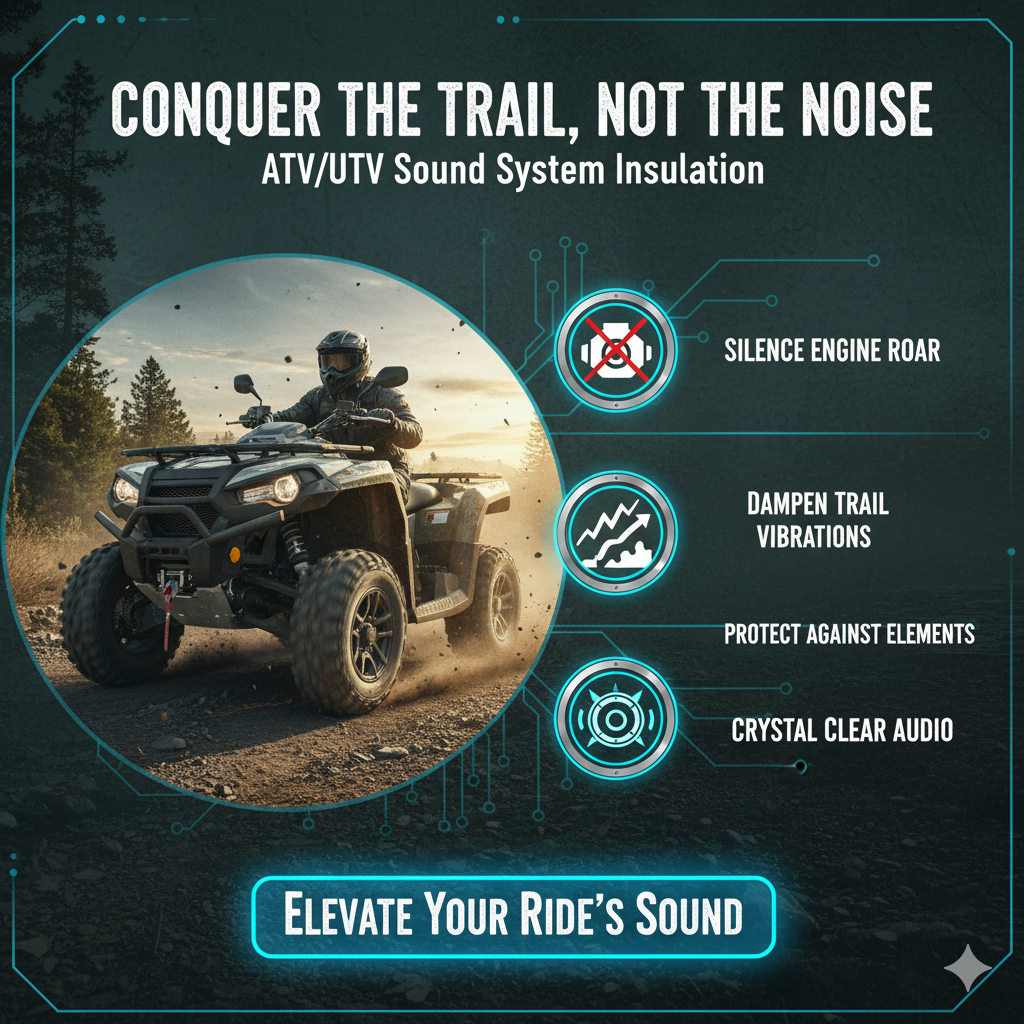
MLV works best when it’s decoupled from the vibrating surface, meaning there’s an air gap or a layer of foam between it and the metal panel. [3]
4. Thermal Insulation:
While primarily focused on sound, many sound insulation materials also offer thermal benefits.
This means your car will not only be quieter but also maintain a more stable interior temperature, making your rides more comfortable year-round.
Materials like ResoNix Fiber Mat are designed to lower overall noise, heat, and more. [4]
The Arsenal: Key Materials for Sound Insulation
Building an acoustically optimized environment requires a combination of different materials, each serving a specific purpose.
Here’s a breakdown of the most common and effective options:
1. Constrained Layer Dampers (CLD) / Sound Deadening Mats:
- What it is: These are adhesive-backed sheets, typically made of butyl rubber with an aluminum constraining layer. Brands like Dynamat, Kilmat, and SoundSkins are popular choices. They come in various thicknesses, often measured in mils (e.g., 80 mil, 100 mil).
- Where to use: Apply directly to vibrating metal panels – doors (inner and outer skins), floorboards, trunk lid, roof, and sometimes the firewall. The goal is to cover at least 25-50% of the panel to effectively reduce resonance, though full coverage provides maximum benefits. [1, 5]
- Benefits: Reduces panel vibration, lowers the noise floor, and improves mid-bass response by making speaker enclosures more rigid.
2. Closed Cell Foam (CCF):
- What it is: A lightweight, flexible foam with a closed-cell structure, meaning it doesn’t absorb water. It often comes with an adhesive backing.
- Where to use: Primarily used as a decoupling layer between CLD and MLV, or to fill small gaps and prevent rattles. It’s also excellent for isolating plastic panels from metal to stop buzzing and squeaking. Can be used behind speakers as a gasket to seal them against the door panel.
- Benefits: Blocks some airborne noise, prevents rattles, provides thermal insulation, and acts as a spacer for other materials.
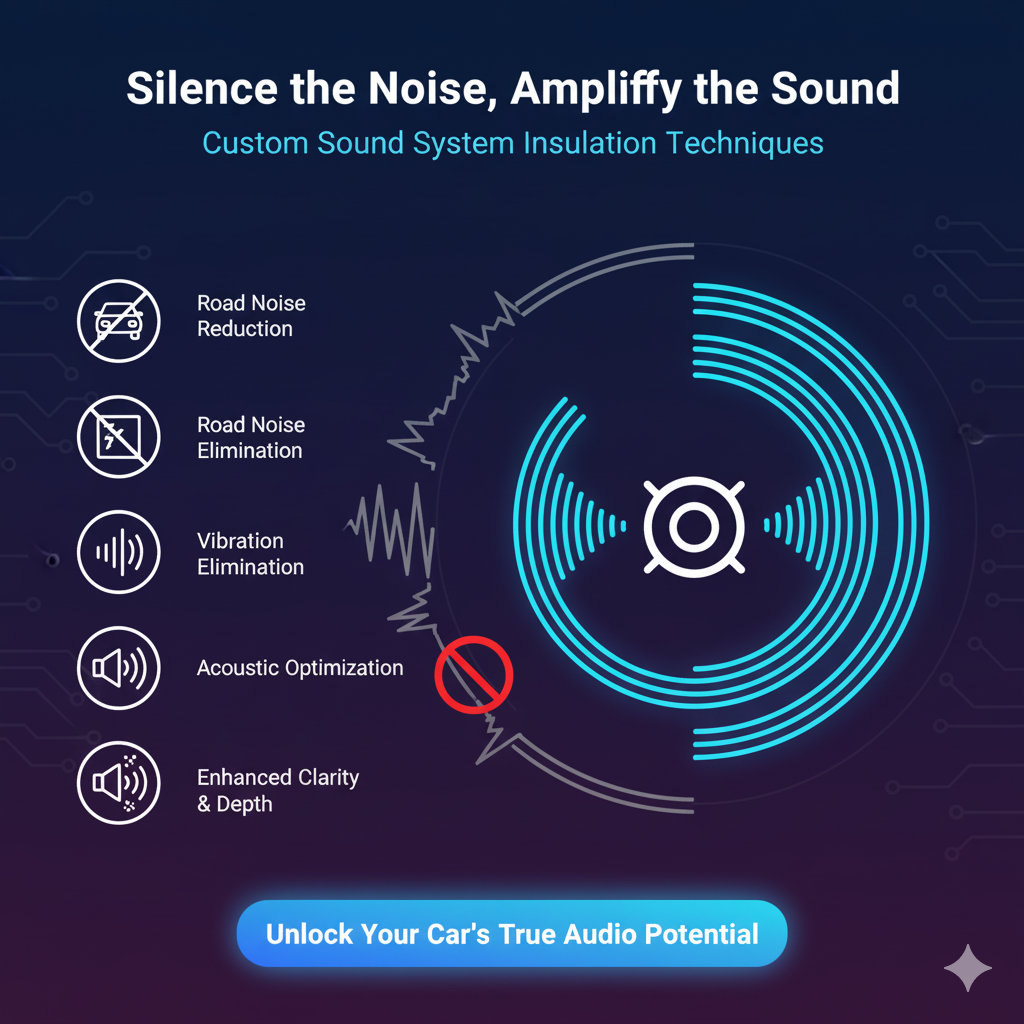
3. Mass Loaded Vinyl (MLV):
- What it is: A heavy, flexible, non-porous barrier material, often black and rubber-like. It’s designed to block sound waves, not absorb them.
- Where to use: Typically installed over a layer of CCF on the floor, firewall, and sometimes the trunk. It needs to be as airtight as possible to be effective, so careful cutting and sealing of seams are crucial.
- Benefits: Excellent at blocking road noise, tire noise, and engine noise, creating a significant reduction in overall cabin sound levels.
4. Open Cell Foam (OCF) / Sound Absorbing Foams:
- What it is: Soft, porous foams (like convoluted foam or acoustic foam) that absorb sound waves within the cabin.
- Where to use: Ideal for lining speaker enclosures, behind door panels, inside pillars, and under the headliner. They help to reduce reflections and improve sound clarity by preventing sound waves from bouncing off hard surfaces.
- Benefits: Reduces echoes, improves soundstage, and enhances overall audio clarity. Can also help with thermal insulation. [3]
5. Speaker Gaskets and Rings:
- What it is: Foam or rubber rings that seal the speaker against the mounting surface and the door panel.
- Where to use: Around the perimeter of speakers, both where they mount to the door/enclosure and where they project through the door panel grille.
- Benefits: Prevents sound from escaping into the door cavity (front wave cancellation), directs sound into the cabin, and reduces vibrations between the speaker and the mounting surface.
Strategic Application: Where to Insulate for Maximum Impact
Effective sound insulation isn’t about haphazardly sticking material everywhere.
It’s about strategic application to target the primary sources of noise and vibration.
Here’s a general roadmap for insulating your vehicle for a superior sound system:
1. Doors: The Speaker Enclosures:
Your doors are essentially the speaker enclosures, and treating them properly is paramount.
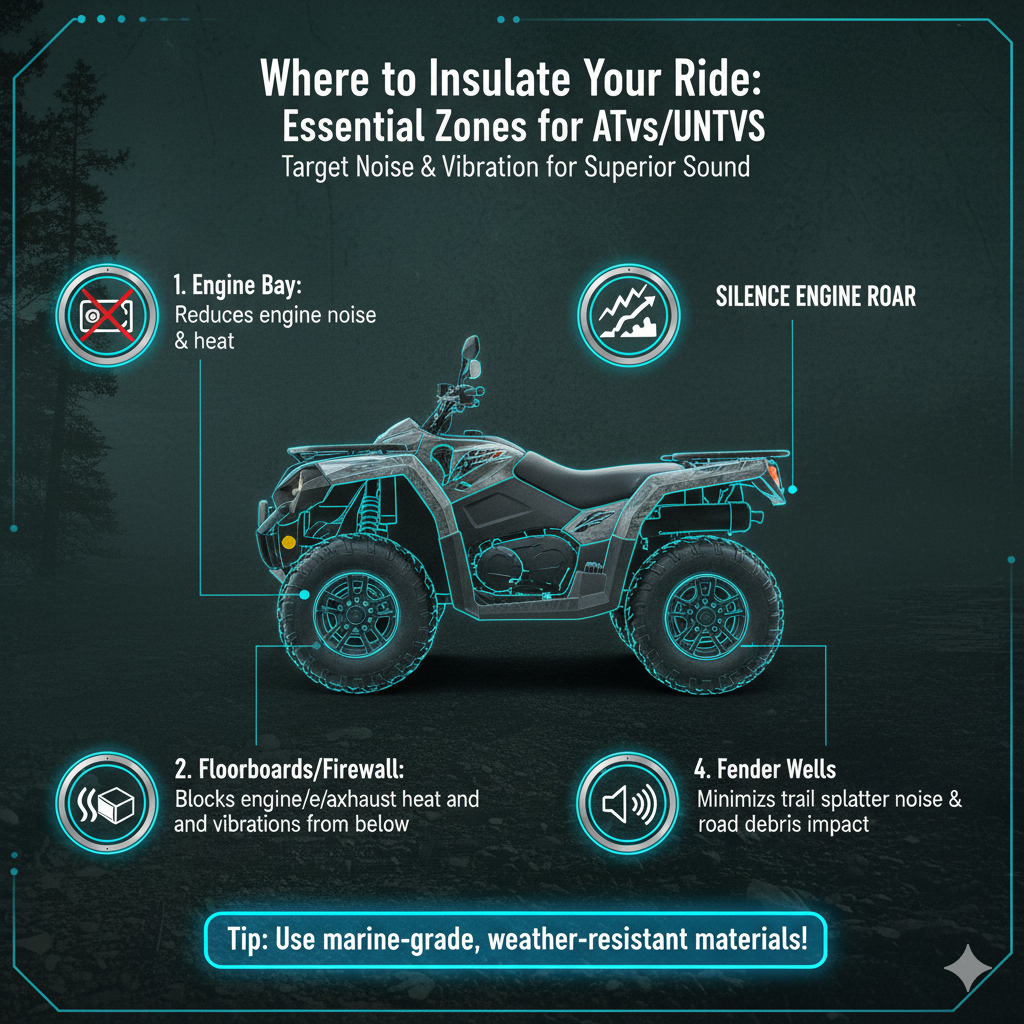
Start by applying CLD to the outer door skin, covering as much of the flat metal as possible.
Then, cover the inner door skin (the panel behind your door card) with CLD, paying close attention to any large, resonant areas.
Use CCF to decouple plastic door panels from the metal frame, and consider adding OCF behind the speakers and inside the door panel to absorb back waves and reflections.
Speaker gaskets are a must to seal the speakers properly.
2. Floorboards: The Road Noise Highway:
The floor is a major conduit for road noise, tire noise, and exhaust drone.
A multi-layer approach works best here.
Apply CLD to the entire metal floor pan.
On top of the CLD, lay down a layer of CCF, followed by a layer of MLV.
This combination effectively damps vibrations, decouples the MLV, and blocks a significant amount of airborne noise from below.
Don’t forget the transmission tunnel and under the rear seats.
3. Trunk/Cargo Area: Bass and Resonance Control:
For vehicles with a trunk or cargo area, this space can be a huge source of resonance and road noise.
Treat the trunk floor, wheel wells, and trunk lid with CLD.
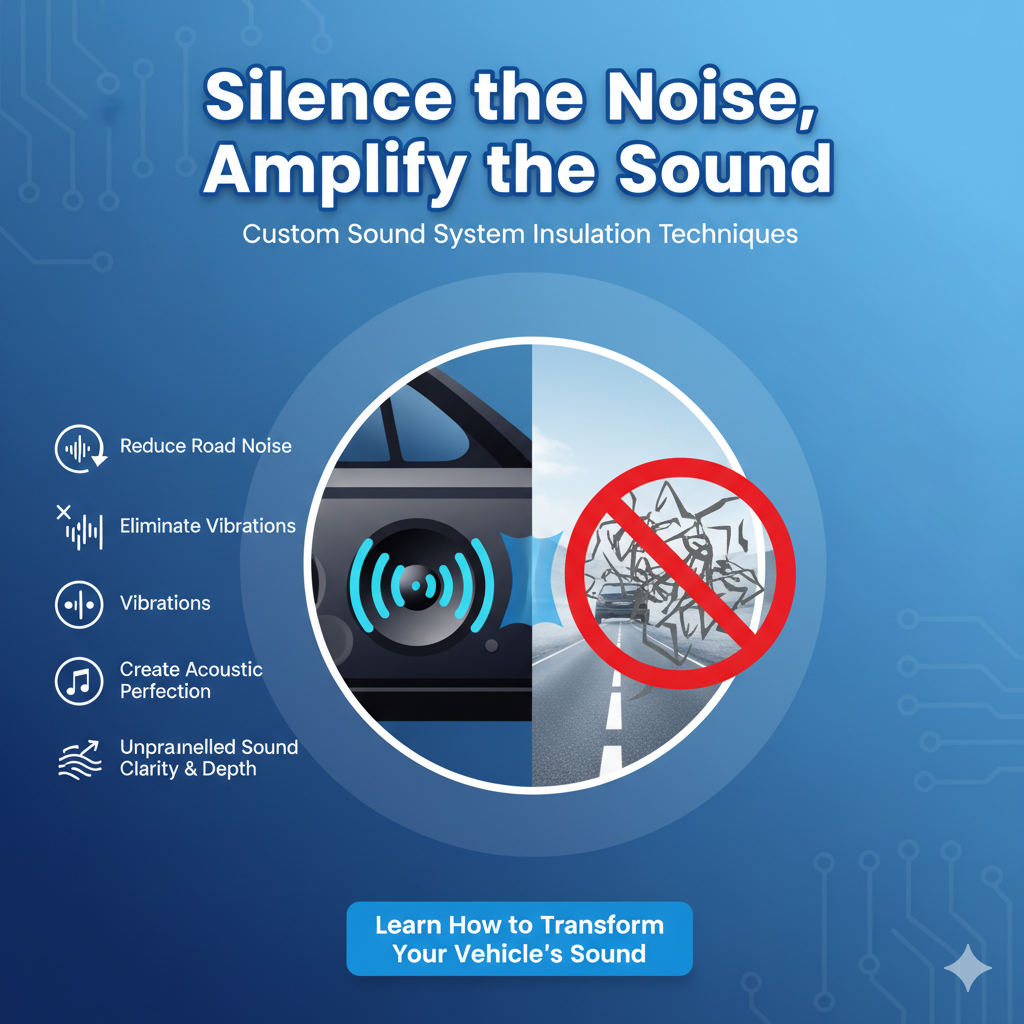
If you have a subwoofer, properly insulating the trunk will dramatically improve its performance by preventing sound waves from escaping and reducing rattles.
Adding MLV and OCF can further enhance the acoustic environment.
4. Roof: Wind and Rain Noise:
The roof is often overlooked but can be a significant source of wind noise and rain drumming.
Applying CLD to the roof skin, followed by a layer of OCF or CCF, can make a noticeable difference in overall cabin quietness and improve the clarity of overhead speakers.
5. Firewall: The Engine Barrier:
The firewall separates the engine bay from the cabin and is a major pathway for engine noise.
This area is often more challenging to access, but treating it with CLD and MLV can yield substantial results in reducing engine hum and exhaust noise.
This is typically a more advanced step for dedicated enthusiasts.
The Benefits: Why All This Effort is Worth It
Investing time and effort into custom sound system insulation techniques offers a multitude of benefits that extend far beyond just better bass:
- Crystal Clear Audio: With less external noise and internal resonance, your speakers can reproduce sound more accurately. You’ll hear details in your music you never noticed before, from subtle instrumentals to crisp vocals.
- Enhanced Dynamic Range: The quiet background allows your system’s dynamic range to shine. Soft passages are truly soft, and loud passages are impactful, without being drowned out by road noise.
- Improved Bass Response: Damping vibrations in doors and the trunk turns them into more effective speaker enclosures, resulting in tighter, more impactful, and less distorted bass.
- Reduced Driver Fatigue: A quieter cabin isn’t just better for music; it’s better for you. Reduced noise levels lead to less driver fatigue on long journeys, making your driving experience more relaxed and enjoyable.
- Better Hands-Free Communication: With less background noise, phone calls become clearer and easier to understand, improving safety and convenience.
- Thermal Comfort: Many sound insulation materials also offer thermal insulation, keeping your cabin cooler in summer and warmer in winter, further enhancing comfort.
- Increased Resale Value: A well-insulated vehicle with a superior audio experience can be a significant selling point.
Conclusion: Your Personal Concert Hall on Wheels
Custom sound system insulation techniques are not just an accessory; they are a fundamental upgrade for any serious car audio enthusiast.
By strategically addressing vibrations, absorbing airborne noise, and blocking external sounds, you can transform your vehicle into a personal concert hall on wheels.
It’s a holistic approach that recognizes the vehicle’s interior as an integral part of the audio system itself.
So, if you’re ready to unlock the full potential of your car audio and immerse yourself in a world of pure, unadulterated sound, it’s time to embrace the science and art of sound insulation.
Your ears, and your music, will thank you for it.
Get ready to experience your favorite tracks with a clarity and depth you never thought possible on the road!
References
- [1] DIYMA. (2023, October 30). Car Audio Sound Deadening – Comprehensive Guide.
- [2] Reddit. (2022, October 15). Sound Deadening for Better Audio Quality? : r/CarAV.
- [3] B-Quiet. (n.d.). The Ultimate Guide to Sound Deadening Your Vehicle.
- [4] ResoNix Sound Solutions. (n.d.). ResoNix Fiber Mat – Self Adhering Automotive.
- [5] SoundSkins Global. (2024, January 30). Maximizing Your Car Audio with Sound Deadening.


